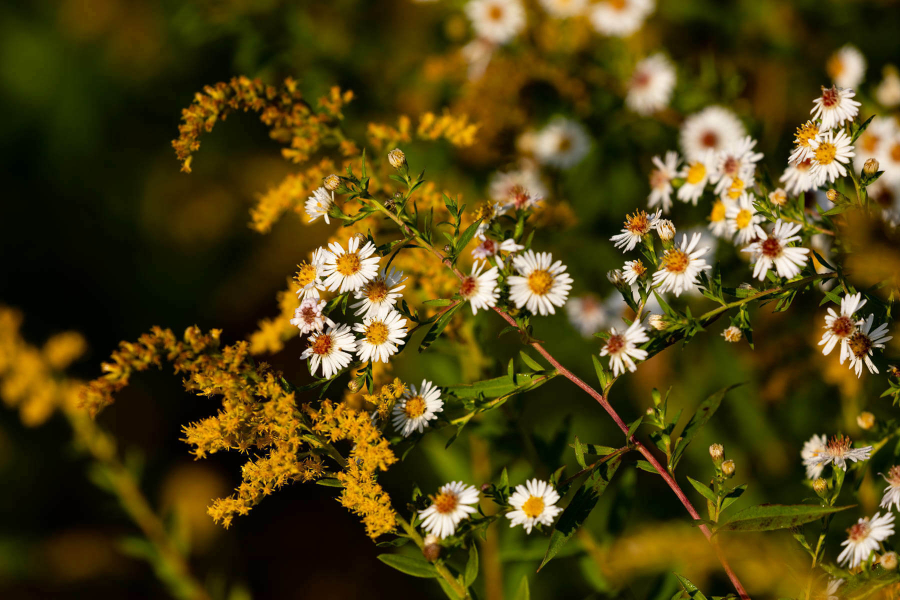Is fall the end of gardening season, or just the beginning?

As summer comes to an end, the vibrant blooms of your garden become dull seed pods. But despair not—fall isn’t the end of gardening season. It’s actually the best time to plant perennials: flowers, shrubs, trees and other plants that come back year after year.
Spring is normally thought of as the best gardening season in the Chesapeake Bay watershed, but unpredictable freezes can be deadly for young plants put into the ground planted too early. On the other hand, the intense heat of early summer can kill perennials planted too late in the spring. The cool and stable temperatures of fall make it an excellent time for planting perennials. Although sunlight is a critical component for plant growth, cloudy skies and cool temperatures allow newly planted perennials to adjust to their space and focus on growing roots.
Mid-fall is also a great time to plant seeds for native perennial plants. Each type of seed perfectly evolved a different technique that protects them during distribution: sharp points to keep mammals from chewing on them, thick pods to protect seeds from the stomach acid of birds and thin silks to carry seeds in the wind, to name a few. This has become the natural lifecycle for each plant and many of them won’t sprout without it.
Many native plant seeds like those of milkweed, black-eyed Susan and wild geranium are programmed to survive a period of near freezing temperatures and are triggered to start growing when spring brings warmer temperatures. It might seem contradicting, but this process is actually what helps the plant grow. If seeds are purchased online and planted in late spring, gardeners need to mimic this process with a technique called “cold stratification.” By planting seeds in late fall, gardeners can let the winter weather do the work for them.
Planting seeds in the fall also guarantees that each plant will sprout exactly when it is supposed to; instead of gardeners needing to guess when they should plant each type of seed in the spring.
When thinking about what types of plants to include in your yard, think about incorporating a wide diversity of plant types to help local wildlife. Choose flowers with different shapes and colors, trees that are evergreen and deciduous, as well as berry-producing plants. A variety of plants is sure to yield something beautiful each season and provide food and habitat for local wildlife. This is also an opportunity to shape your winter gardens of the future. If you’re not a fan of the dull colors of winter, consider planting a winterberry or American persimmon, which will just be starting to show their beautiful colors when other plants are dimming. To bring some color back in early spring, consider planting Virginia bluebells and trout lilies.
Perennials that are planted in the fall will provide benefits to the local ecosystem for years to come. These plants will serve as a source of food and habitat for wildlife and help to absorb stormwater runoff before it enters local waterways. To protect young plants from winter weather, and to help local wildlife, take a more relaxed approach to cleaning up your garden this winter. Instead of mowing over or bagging up leaf litter—which often house insect eggs and other overwintering critters—use fallen leaves as mulch to insulate plants from variable temperatures.
Are you ready to get your hands in the soil this season but don’t know what will work in your yard? Use the Chesapeake Bay Native Plant Center tool to search by region, plant type, sun exposure, soil texture and soil moisture to find the perfect plants for your space.
To learn more about the role the native plants play in our ecosystem, check out the Chesapeake Bay Program’s Native Plants and Pollinators webinar featuring some of our plant and wildlife specialists.

Comments
There are no comments.
Thank you!
Your comment has been received. Before it can be published, the comment will be reviewed by our team to ensure it adheres with our rules of engagement.
Back to recent stories